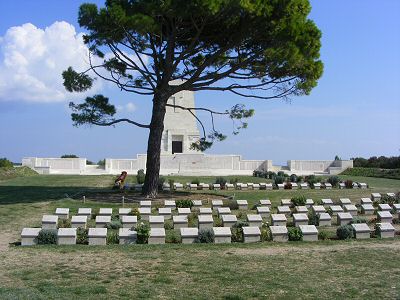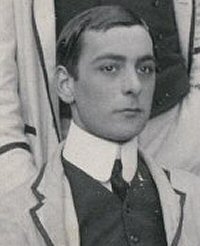|

Lone Pine Memorial, Turkey

Private Havilland Montague Durand
Havilland Montague Durand was born on 21 December 1883
at Earley vicarage near Reading. His father, also Havilland
Durand, was vicar there for 13 years, and died shortly
afterwards in 1884. Havilland was the seventh and last
child and was then brought up by his widowed mother Mary
in St Peter Port and then Moulin Huet in Guernsey. Havilland
was educated at Elizabeth College, Guernsey, and then
University College, Durham where he matriculated in Michaelmas
term 1902. He passed his first year Arts exams in Easter
term 1903 and his finals in Easter term 1904. He took
his BA degree on 21 June 1904, and his M.A. on 25 June
1907. He rowed bow in the University College Senate Cup
winning crews of both 1904 and 1905, having stayed on
after graduation as secretary of the Students Representative
Council (forerunner of the present DSU). He served for
2 years in the 5th (Volunteer) Battalion of the Durham
Light Infantry. He then emigrated to Australia, travelling
from London in September 1911 to Brisbane, where he settled
as a teacher. He volunteered as a Private on the outbreak
of war and joined the Australian Imperial Force on 4 September
1914. He was posted to the newly formed 13th Battalion
on 22 September. He embarked for Egypt with his battalion
at Melbourne on 22 December 1914 on H.M.A.T. Ulysses.
As part of 4th Brigade of the New Zealand and Australian
Division 13th Battalion spent the winter training in the
Cairo area. The Battalion sailed from Alexandria on 13
April and arrived off Anzac Cove on the Gallipoli Peninsula
at 4.30 p.m. on the afternoon of 25 April 1915. A, B and
C Companies disembarked under fire at 9.30 p.m. that evening,
D Company landing at 3.30 a.m. the next morning. The battalion
took up positions on Pope’s Hill and Quinn’s
Hill at the head of Monash Valley at 5.00 a.m. By 27 April
his company was running short of ammunition and Lister
volunteered to go back down Monash Valley to the beach
to fetch more. Both the gully and the beach were under
heavy Turkish fire. He managed to get back with the ammunition
but seems to have been killed either later that day or
during the next. His service record established the date
of death as 27 April however. His captain wrote “he
had done his duty and saved our line. I have to mention
that he was loved by officers and men alike. He was selected
and especially trained for a batt[alio]n Scout, work that
always required a lot of intelligence and tact. The Colonel
assured me that if Durand had not arrived with the ammunition,
his comrades who were in an isolated position, would have
been annihilated and our line would have been broken”.
His effects included a rosary, a French book and a sketch
book. He was buried by his comrades on a hill at Gaba
Tepe with a cross above his grave. The grave was lost
in the fighting and he is now commemoratedin the Lone
Pine Memorial in Turkey. His eldest brother, Francis William
Durand, had been killed in France on 22 December 1914.
Additional sources: Australian Imperial Force unit war
diaries, April 1915
|

Private Havilland Montague Durand
Australian Infantry, A.I.F. (formerly
Royal Durham Light Infantry)
27/04/1915

1914-15 Star
Son of Mrs Durand, St Martin's, Guernsey. A schoolmaster.
Born near Reading, Berks. Enlisted at New South Wales.
Killed in action at Gallipoli, aged 32 years
Commemorated on:
Island (Bailiwick) Memorial, St Peter Port, Guernsey
St Martin's Parish Memorial, Guernsey
Elizabeth College, Guernsey. Roll no. 2727
Commonwealth
War Graves Commission Record
Australian
Service Record
The image is a detail from a team portrait of the University
College Four Senate Cup [winners] in 1905, in which
H. M. Durand rowed bow (Ref: UND/F1/FB1905S).
|